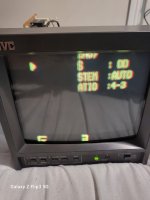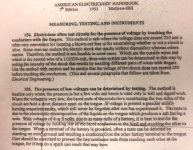MatthewH1919
New Member
- Joined
- Sep 8, 2024
- Messages
- 7
Hi, I initially posted this in off topic and was told to post it here with better photos, also i should mention im not very knowledgable with analogue electronics.
a few months ago I picked up a jvc A101G video monitor. Just the other day while i was using it, it suddenly went out of focus, distorted, larger and the colours were more saturated looking. And after turning it on and off there is also a large black bar on the left side of the screen running from top to bottom (this is why the text is cut off in the picture). I recapped the entire monitor, (except for the higher voltage caps as I dont have any) but it didnt make any difference, nothing looks noticably burnt out. What is the likely cause of this, im worried it might be the tranformer failing, as people with similar issues said it was. I have the schematic for the monitor however its not much use to me as im not really able to decifer it very well. I can take some voltage readings from the transformer if someone would be able to let me know if they seem normal.
any help is much appretiated.
thanks, matthew

a few months ago I picked up a jvc A101G video monitor. Just the other day while i was using it, it suddenly went out of focus, distorted, larger and the colours were more saturated looking. And after turning it on and off there is also a large black bar on the left side of the screen running from top to bottom (this is why the text is cut off in the picture). I recapped the entire monitor, (except for the higher voltage caps as I dont have any) but it didnt make any difference, nothing looks noticably burnt out. What is the likely cause of this, im worried it might be the tranformer failing, as people with similar issues said it was. I have the schematic for the monitor however its not much use to me as im not really able to decifer it very well. I can take some voltage readings from the transformer if someone would be able to let me know if they seem normal.
any help is much appretiated.
thanks, matthew



